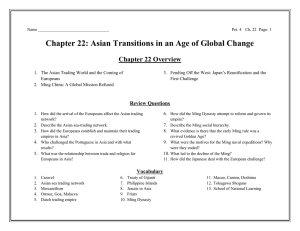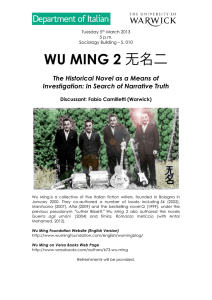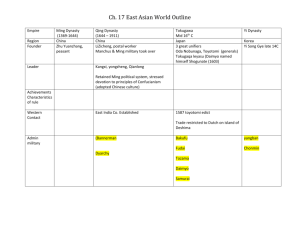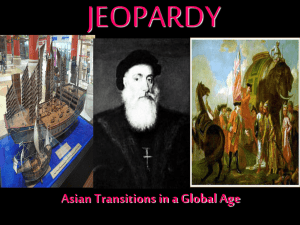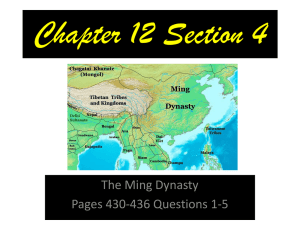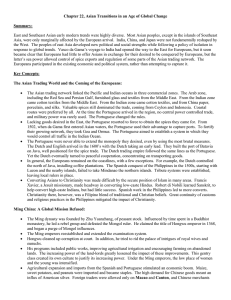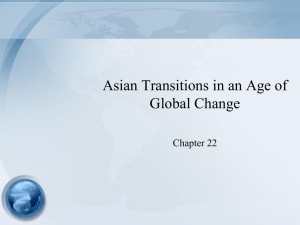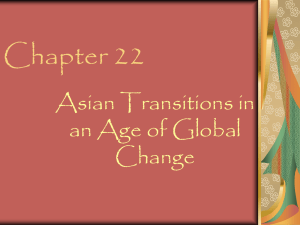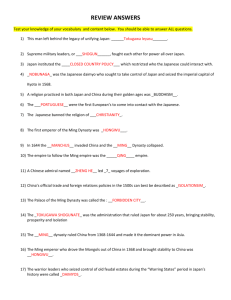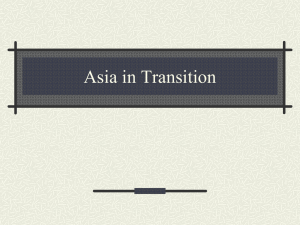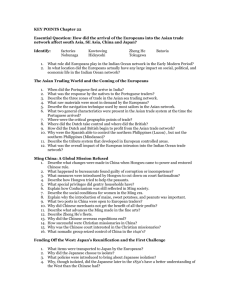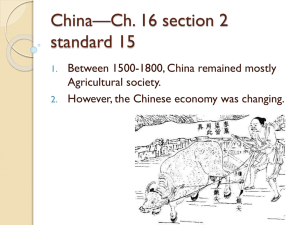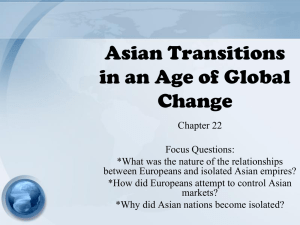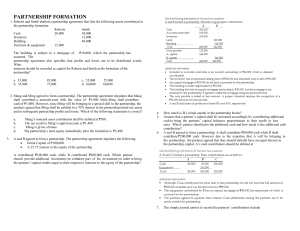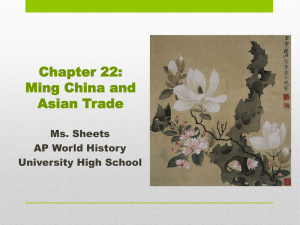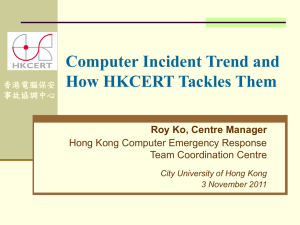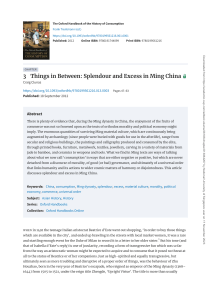Chapter 22
advertisement
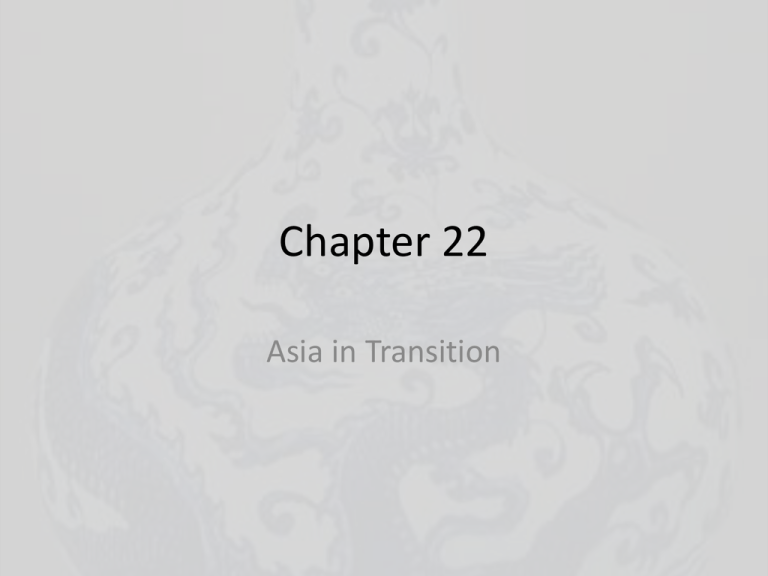
Chapter 22 Asia in Transition Objectives • Understanding the change in Asian/Western trade dynamics • See the difference in the growth of the Ming Dynasty • Understand the Development of the Shogun Asian Sea Trading Network • 3 Main Zones based on handcraft manufacturing – Arab Zone: Glass, carpet, tapestry-making – Indian Zone: Cotton textiles – China Zone: paper, porcelain, silk textiles • Areas in between included – Japan, South East Asia, and East Africa • Long distance trade was expensive so the items had to be worth the trip 2 general characteristics at the time critical to European taking Control 1. There was no central control 2. Military force usually absent from commercial exchanges 1. Vessels were lightly armed 2. Everyone had something to trade so why fight Portuguese • Not willing to abide by the established Asian rules • Mercantilists: – Prominent economic theory at the time – A state’s power depended heavily on the amount of precious metals a monarch had – Therefore trading only precious metals with Asia for goods was out of the question • Had to be taken by force • Development of a tribute style trading dynamic Rise of the Dutch and English • The Portuguese were never able to completely control the spice trade: over extended • The Dutch wanted to control certain spices not all of the Asian trade – – – – Fortified towns Controlled the monopoly better with great ships Golden Age of the Dutch Saw the advantages in peaceably joining the trade network • England was forced to stay in India Spreading the Faith • Dutch, English: Protestant and their main objective was not conversion of the natives • Spain, Portugal: Roman Catholic and conversion was a major component of their global mission • Philippians: – Greatest success for Christian conversion – Hadn’t been exposed to the other religions (Islam) – Friars: sent to convert Ming • Founded by Zhu Yuanzhang (Hongwu) – Reinstated and expanded the civil service exam • Level system – Your government position depended on your success in different levels of exams – Strict regulations on bureaucrats – Very concerned with the plight of the lower class • Tried to improve things with public works projects – HOWEVER, the scholar gentry is still very strong and still makes gains during this time. Growth of the Ming • 1st decade of the Ming = economic growth because of unprecedented contact with oversee – 3 very important plans: maize, sweet potatoes, peanuts (huge population growth) • Commercial Growth – Two places Europeans could trade (Macao, Canton) – Merchant class got most money which funneled into the government and gentry class • Land was still the best way to power and merchants wanted the land so they bought it Ming Exploration • 3rd emperor Yunglo: sent explorations 14051423 – Zhenghe: • 7 major expeditions • Explore, proclaim glory of the Ming • Lasted 3 voyages reached Persia, Southern Arabia and East coast of Africa • Within 50 years the move to isolationism will begin Ming Decline • By late 1500s: dynastic decline – Isolation – Mediocre rulers – Corruption – Drought and famine – Renewed assaults by nomads – Public works in disrepair – Elites luxury: taking advantages Japan • 3 military leaders fix the problems of the daimyo stalemate and recurring civil war 1. Nobunaga: one of the fist to make extensive use of guns, accepts Christianity 2. Toyotomi Hideyoshi: Alliance and victories over remaining daimyos. Wanted to expand Japan 3. Tokygawa Ieyasu: consolidated power and stopped overseas campaign • Tokugawa Shogunate: centralized control – Pledge personal allegiance to the Shogun
